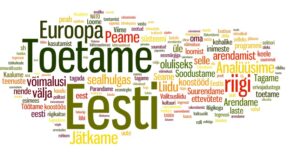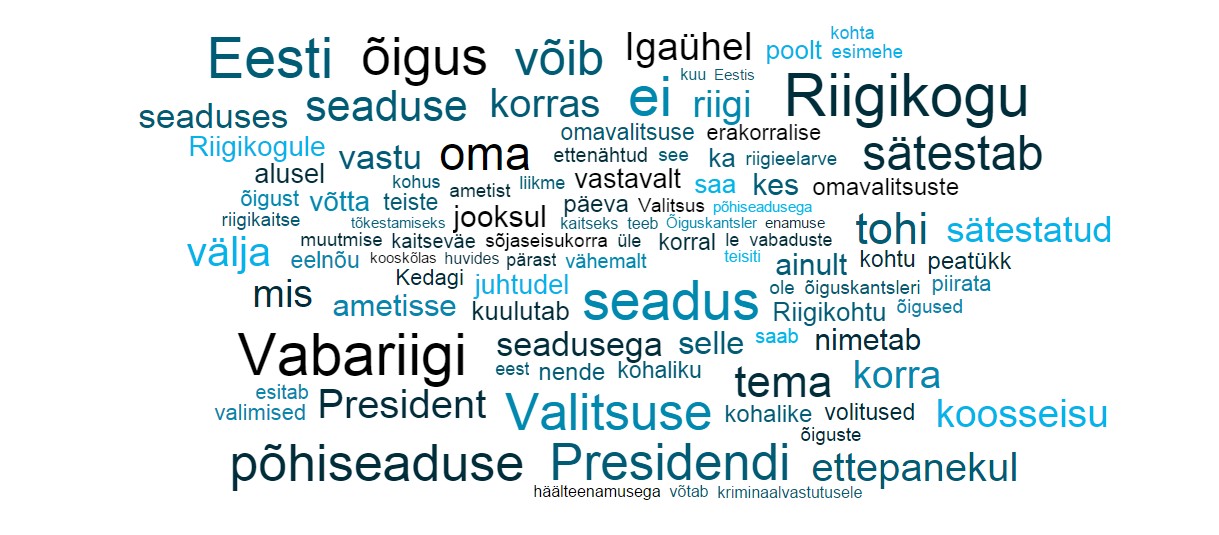
I happened to read an article in Postimees about the word cloud of promises made by the new government. Word clouds are fascinating formations where the most frequently occurring words are depicted larger than the less represented words. It’s a simple way to visualize information, allowing you to understand what the text is about without reading it, even if the text itself spans several pages. The author of the article did not mention how and with what tool they created such an image, but judging by the picture, it’s unlikely to have been done by hand. Also, as a programming task, it’s not the simplest, requiring more than just four lines of code.
An algorithm for creating a word cloud could be as follows: first, count the frequency of all words and arrange them in order of frequency. Then, for example, match this with the text size by percentage and scatter the words across the screen. It’s doubtful that the journalist did something like this when writing their article because otherwise, instead of a static image, we would have received an animation.
To do the same, for example, based on the text of the Estonian Constitution and find the main points in this lengthy text, several websites can be used. I used a website called Worditout.com to create a word cloud, and it managed to create the cloud in a few seconds.

Additionally, it was possible to choose the color, font style, and several other variables for the image. You could also exclude conjunctions or words that seemed irrelevant from the picture.

